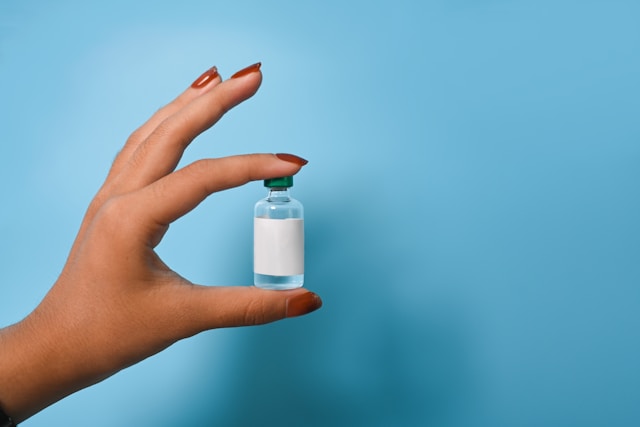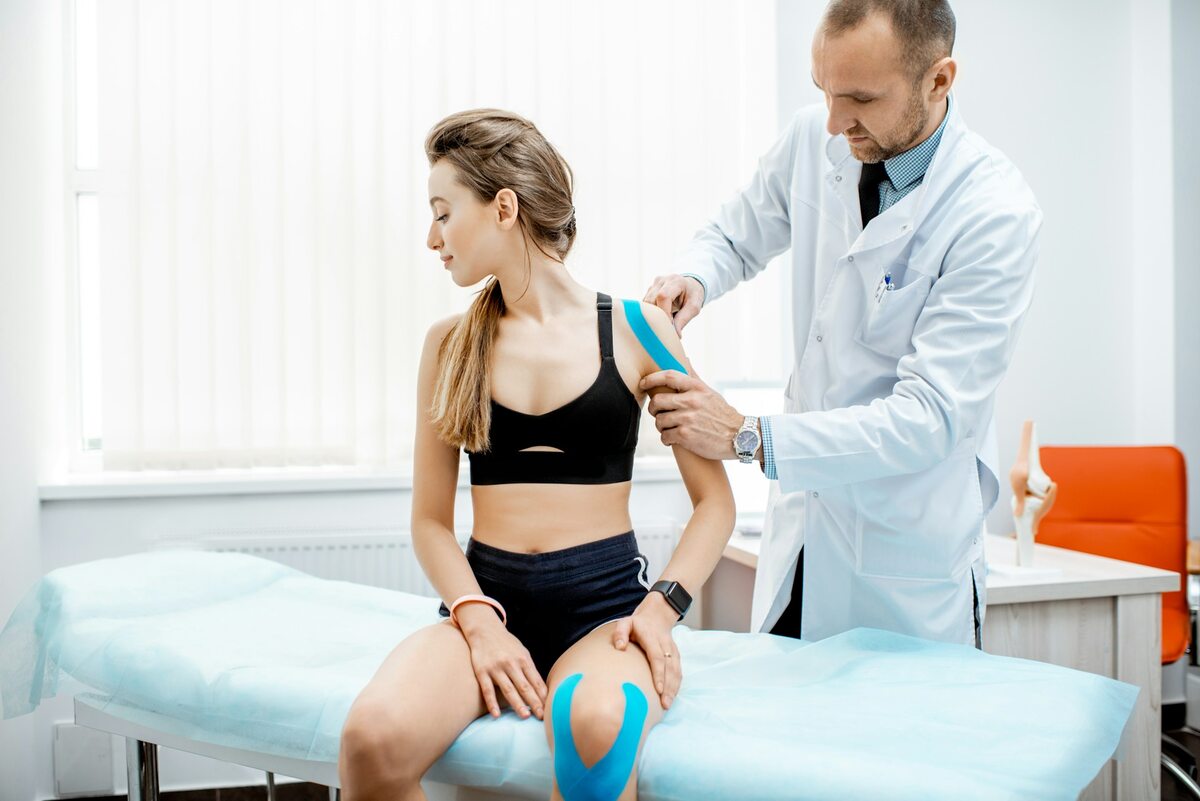This article is for informational purposes only and does not constitute medical advice. Always consult with a qualified healthcare provider before considering any peptide therapy.
The Wolverine Stack combines two healing peptides BPC-157 and TB-500 for accelerated healing and tissue repair. The name comes from the Wolverine character from Marvel comics, who has similar rapid-healing abilities. This stack of peptides has become popular with athletes, biohackers, and individuals recovering from injuries for those looking for a faster recovery option with peptide therapy.
The Wolverine Stack uses BPC-157 to act locally at the site of injury and TB-500 for a systemic recovery for the rest of the body. But what does the research say?
Quick Takeaways
- The Wolverine Stack combines BPC-157 (250-500 mcg daily) with TB-500 (2-5 mg weekly) to support tissue healing through complementary mechanisms.
- Animal studies show promising results for tendon, muscle, and tissue repair, but human clinical trials remain limited.
- Neither peptide has FDA approval for human use, and both are banned by WADA for competitive sports.
- Theoretical safety concerns exist around angiogenesis and potential cancer risks, though no human studies have confirmed these effects.
What is the Wolverine Stack?
The Wolverine Stack is a regenerative protocol involving the use of two synthetic peptides together, BPC-157 and TB-500.
BPC-157 is a 15-amino acid peptide fragment of a synthetic protective protein that naturally occurs in human gastric juice. It has been found to be stable in gastric juice for more than 24 hours and that it contributes to gastrointestinal homeostasis[1].
TB-500 is a synthetic analog of thymosin beta-4, a 43-amino acid peptide that is naturally produced by your body and is important for cell differentiation and tissue regeneration processes that occur throughout the body.
The reason these two peptides are often stacked is because they work to improve healing through various pathways. The main use for the Wolverine Stack is to promote a faster recovery from injuries, including surgical interventions and other chronic conditions affecting the soft tissue.
How Does Each Peptide Work?
While both peptides facilitate recovery, they do so in different ways.
BPC-157: The Local Healer
BPC-157 induces the Src-Caveolin-1-eNOS pathway, leading to increased production of nitric oxide (NO) and enhanced blood vessel dilation. A study published in the Journal of Physiology and Pharmacology discovered that BPC-157 also induces angiogenesis through upregulation of VEGFR2 expression[2].
This peptide is also involved in the activation of ERK1/2 signaling pathways, which are important for cellular proliferation and migration, both essential processes in the rebuilding of damaged tissue at the site of injury.
Dr. Predrag Sikiric, who has authored over 100 papers on BPC-157 at the University of Zagreb, describes the peptide as “a novel cytoprotective mediator, stable gastric pentadecapeptide BPC 157” that maintains tissue integrity across different organ systems[1].
TB-500: The Systemic Supporter
TB-500 binds to monomers of G-actin (globular actin) which sequester the G-actin from polymerization into F-actin (filamentous actin) fibres. Sequestering increases cellular motility and migration towards injury sites.
Thymosin Beta-4 also acts to reduce inflammation through the inhibition of inflammatory cytokines (TNF-α, IL-1β, and IL-6). Studies have indicated that Thymosin Beta-4 preserves ischemic tissue during the acute phase of an injury by its anti-inflammatory mechanism[3].
Allan L. Goldstein, co-discoverer of the thymosins at George Washington University, notes that “Thymosin β4 binds to actin and promotes cell migration, including the mobilization, migration, and differentiation of stem/progenitor cells” which form new blood vessels[4].
Third-Party Tested, 99% Purity
Order lab-verified peptides from our top recommended vendor.

What Are the Potential Benefits?
Most of the current research regarding the Wolverine Stack is based on animal studies. Human clinical data is still limited.
Musculoskeletal Healing
Both peptides show promise for faster healing in soft tissue injuries:
- Tendon and ligament repair: Animal studies demonstrate improved tensile strength and collagen organization in tendon healing models[5]
- Muscle recovery: BPC-157 supports localized muscle repair while TB-500 promotes systemic recovery through increased actin production
- Reduced scar formation: TB-500 decreases myofibroblast numbers in wounds, resulting in less fibrosis[6]
Cardiovascular Applications
TB-500 has shown cardioprotective effects in preclinical models. Research indicates it may reduce infarct size and improve cardiac function after ischemic injury[3].
BPC-157 has cardioprotective properties as well, potentially mediated by activation of the Src-Caveolin-1-eNOS pathway, which may confer protection against myocardial infarction and thrombosis.
Gastrointestinal Healing
BPC-157 has been tested in Phase II clinical trials for ulcerative colitis, showing benefits within 2 weeks for mild to moderate cases. The peptide promotes mucosal healing and restores tight junction integrity in the gut lining[7].
Neurological Support
Both peptides show neuroprotective effects in animal models. Studies on spinal cord compression found BPC-157 improved functional recovery and counteracted paralysis in rats[8].
BPC-157 and TB-500 Protocol
The Wolverine Stack typically runs for 4-8 weeks with specific dosing schedules for each peptide.
Dosing Guidelines
| Peptide | Standard Dose | Frequency | Administration |
|---|---|---|---|
| BPC-157 | 250-500 mcg | 1-2x daily | Subcutaneous near injury |
| TB-500 | 2-5 mg | 2-3x weekly | Subcutaneous or intramuscular |
Administration Tips
Injections of BPC-157 are most effective near the site of musculoskeletal injuries. TB-500 may be injected in another location because it is systemic.
The two peptides should be given in separate injections. Their stability when mixed is unknown, and they target different sites.
Most protocols recommend cycling rather than continuous use:
- Standard cycle: 4-6 weeks on, 2-4 weeks off
- Extended cycle: 8-12 weeks for severe injuries, followed by 4-8 week break
- No tapering required since these peptides don’t suppress natural production
Common Stack Protocols
Standard approach:
- Week 1-4: TB-500 5 mg weekly + BPC-157 500 mcg daily
- Week 5-8: TB-500 2.5 mg weekly + BPC-157 250 mcg daily
Conservative approach:
- Start with 250 mcg BPC-157 daily for 1-2 weeks
- Add TB-500 at 2.5 mg twice weekly
- Increase only if well tolerated
Is the Wolverine Stack Safe?
The safety profile appears favorable in animal studies and limited human reports, but comprehensive long-term data is missing.
Common Side Effects
Most reported effects are mild and temporary:
| Peptide | Reported Effects |
|---|---|
| BPC-157 | Mild nausea, headache, fatigue (first few days), injection site irritation |
| TB-500 | Brief head rush post-injection, temporary fatigue, increased hunger, hair growth |
Serious Concerns
The biggest concern involves both peptides’ pro-angiogenic activity. Since angiogenesis feeds tumor growth, there’s theoretical risk these peptides could support cancer progression if malignant cells are present.
A 2023 pharmaceutical review warned that “since VEGF/VEGFR2 pathways are active in roughly half of human cancers, BPC-157 could inadvertently support tumor growth and metastasis if cancer cells are present.”
Yet contradictory evidence exists. Research shows BPC-157 can inhibit uncontrolled cell proliferation and downregulate VEGF in certain contexts. The peptide appears to modulate angiogenesis differently depending on tissue type[9].
No human trials have evaluated cancer risk directly. The concerns stem from mechanism-based extrapolation rather than clinical evidence.
Regulatory Status
Neither peptide has FDA approval for human use. The FDA stated in 2023 that “BPC-157 has not been proven safe or effective for any condition and is not eligible for compounding.”
Both peptides are banned by WADA for competitive sports. Athletes face suspension if caught using either compound.
Quality Control Issues
Without FDA oversight, products purchased online may contain incorrect dosages or contaminants. A 2025 comprehensive review notesthat “adverse effects are possible due to unregulated manufacturing, contamination, or unknown clinical safety.”[10]
💡PEPTIDE PICKS: MORE TO EXPLORE
- Want to compare healing peptides head-to-head? See our analysis of TB4 vs TB-500 to understand which form works better for recovery.
- Exploring other regenerative options? Learn about the GLOW peptide blend and how it compares to standalone protocols.
- Looking for separate dosage protocols for these peptides? Use our BPC-157 dosage calculator or TB-500 dosage guide.
The Bottom Line
The Wolverine Stack combines two peptides with complementary healing mechanisms supported by extensive animal research. BPC-157 targets local tissue repair while TB-500 supports systemic recovery. While preclinical data looks promising for tendon, muscle, and soft tissue healing, human clinical trials for these peptide therapies remain limited.
Both peptides lack FDA approval and carry theoretical safety concerns around angiogenesis in cancer-prone individuals. Quality control issues with unregulated sources and the absence of long-term human safety data mean this stack should only be considered under qualified medical supervision.
These peptides may serve as supportive tools within structured recovery plans, but they don’t replace proven therapies like physical therapy, proper rest, and conventional medical treatment.
References
- Sikiric P, Rucman R, Turkovic B, Sever M, Klicek R, Radic B, et al. Novel Cytoprotective Mediator, Stable Gastric Pentadecapeptide BPC 157. Vascular Recruitment and Gastrointestinal Tract Healing. Bentham Science Publishers Ltd.; 2018. https://doi.org/10.2174/1381612824666180608101119
- Suski M, Olszanecki R, Madej J, Gebska A, Bujak-Giżycka B, Korbut R. Angiotensin metabolism in rat stomach wall: prevalence of angiotensin-(1-7) formation. Institute of Organic Chemistry and Biochemistry, Academy of Sciences of the Czech Republic; 2009. https://doi.org/10.1135/css200911118
- Bao W, Ballard VL, Needle S, Hoang B, Lenhard SC, Tunstead JR, et al. Cardioprotection by systemic dosing of thymosin beta four following ischemic myocardial injury. Frontiers Media SA; 2013. https://doi.org/10.3389/fphar.2013.00149
- Goldstein AL, Kleinman HK. Advances in the basic and clinical applications of thymosin β4. Informa Healthcare; 2015. https://doi.org/10.1517/14712598.2015.1011617
- Chang CH, Tsai WC, Hsu YH, Pang JH. Pentadecapeptide BPC 157 Enhances the Growth Hormone Receptor Expression in Tendon Fibroblasts. MDPI AG; 2014. https://doi.org/10.3390/molecules191119066
- Goldstein AL, Hannappel E, Sosne G, Kleinman HK. Thymosin β4: a multi-functional regenerative peptide. Basic properties and clinical applications. Informa UK Limited; 2011. https://doi.org/10.1517/14712598.2012.634793
- Klicek R, Kolenc D, Šuran J, Drmic D, Brčić L, Aralica G, et al. Stable gastric pentadecapeptide BPC 157 heals cysteamine-colitis and colon-colon-anastomosis and counteracts cuprizone brain injuries and motor disability. Journal of Physiology and Pharmacology 2013;64 5:597–612.
- Perovic D, Milavic M, Dokuzovic S, Krezic I, Gojkovic S, Vranes H, et al. Novel Therapeutic Effects in Rat Spinal Cord Injuries: Recovery of the Definitive and Early Spinal Cord Injury by the Administration of Pentadecapeptide BPC 157 Therapy. MDPI AG; 2022. https://doi.org/10.3390/cimb44050130
- McGuire FP, Martinez R, Lenz A, Skinner L, Cushman DM. Regeneration or Risk? A Narrative Review of BPC-157 for Musculoskeletal Healing. Springer Science and Business Media LLC; 2025. https://doi.org/10.1007/s12178-025-09990-7
- Vasireddi N, Hahamyan H, Salata MJ, Karns M, Calcei JG, Voos JE, et al. Emerging Use of BPC-157 in Orthopaedic Sports Medicine: A Systematic Review. SAGE Publications; 2025. https://doi.org/10.1177/15563316251355551







